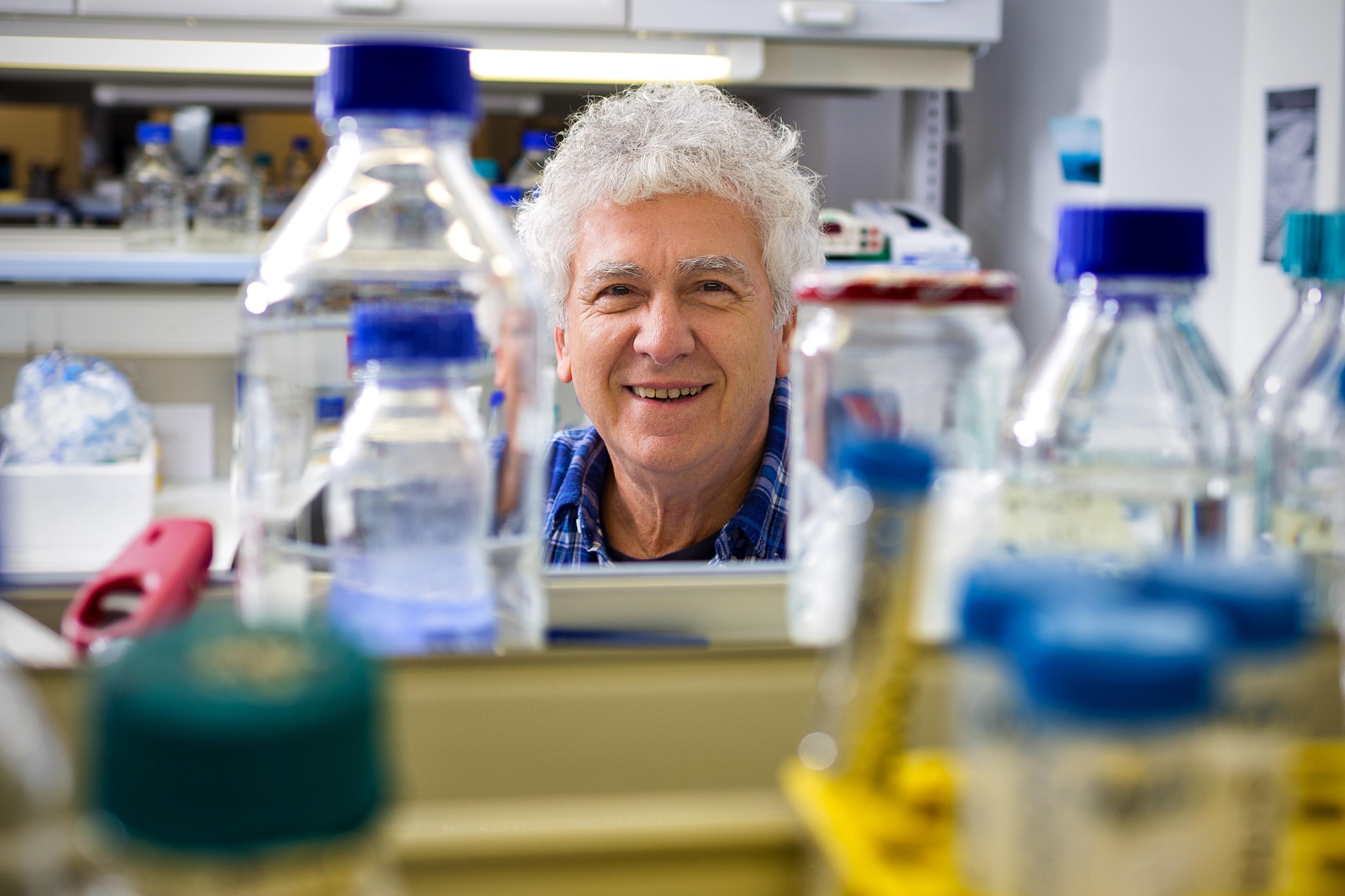MIROSLAV RADMAN

A biographical sketch
Born in April 30, 1944 in Split (Croatia), Miroslav Radman is a French-Croatian geneticist and molecular biologist. Married to Danica Radman, ethnomusicologist, he has three children. He graduated in biology from the University of Zagreb, Croatia. In 1969, he received his PhD degree in molecular biology from the Free University of Brussels, Belgium. After working as a postdoctoral researcher with Raymond Devoret (1969-70) at the Centre national de la recherche scientifique (CNRS) at Gif-sur-Yvette, France, he joigned Matthew Meselson at Harvard University, Cambridge, MA, USA (1970-73). He is a former Professor of Molecular Genetics at the Free University of Brussels (1973-83) and a Research Director at the French CNRS (Institute J. Monod, Paris, 1983-1997). In 1998, he becomes professor of Cell Biology at the Medical School of the René Descartes University (Paris-5) and director of the INSERM research Unit 571 "Evolutionary and Medical Molecular Genetics", from which he retires in 2013 as exceptional class professor emeritus.
Miroslav Radman is member of several international clubs and academies, notably, EMBO, the Croatian Academy of Sciences and Arts, the French Academy of Science, the World Academy of Arts and Sciences, the European Academy of Science, the European Academy of Microbiology, the American Academy of Arts and Sciences and the US National Academy of Science. Over his career, Miroslav Radman has received a dozen of major national and international scientific awards. Furthermore, he was knighted by the Presidents of Croatia and France for his overall contributions to the field of science. He is also the founder of the Mediterranean Institute for Life Sciences (MedILS) in Split, Croatia; a unique fully independent, international institute for the multidisciplinary study of life; also a hub for brain storms, workshops and trans-disciplinary training during summer schools funded by corporate donations from over 30 companies including Microsoft Research. Founding member of four start-up biotech companies in USA and France, and the initiator and co-founder of the EITP (European Institute of Technology in Paris) project.
During his career, he has published over 200 research and review articles in the areas of DNA repair, DNA replication, mutagenesis, genetic recombination, evolution, microbiology, cancer research, protein oxidation and aging, that have been cited over 10.000 times. Additionally, he is the author of 2 books of scientific popularization about his recent work on the field of aging.
Three of his personal discoveries are present in standard molecular biology and genetics textbooks worldwide:
- the discovery of the SOS response in bacteria as the very beginning of integrative, or systems, biology (common control of metabolically unrelated genes including those responsible for induced mutagenesis),
- the discovery of the strand-directed mismatch repair system in E. coli as the paradigmal ubiquitous single most important system for the maintenance of the global genetic stability with anti-cancer activity in humans and
- the discovery that the mismatch repair system acts as the genetic barrier between closely related species (inactivation of that system allows for fertility and genetic recombination in otherwise sterile inter-species crosses in bacteria and yeast).
His paper on the molecular basis of extreme radiation and desiccation resistance in the most robust microbe Deinococcus radiodurans in Nature unravelled a 50 years old mystery and was commented in over thousand newspaper articles and TV news worldwide.
Miroslav Radman’s scientific achievements clearly reveal a highly innovative, creative and daring thinker and scientist who is totally unconstrained by established dogmata. Described by some as the “enfant terrible” of science, Miroslav Radman’s work continues to revolutionize the world of science.
More information:
...That was the question that lasted for 50 years and I\'m so happy that we came with the mechanism. It is a by-product of resistance to desiccation which is a radical dehydration. It can maintain its potential to live even in the desert, burned for months by UV light of the sunlight, and when one looks at bacteria under these conditions, they are radically dehydrated, the genome is broken into 100 pieces, there\'s no trace of metabolism. These bacteria are clinically dead and principally, by re-assembling its genome from hundreds of little pieces, back in the correct order, and then starting re-synthesising all of the components, that\'s the mechanism of this quote-unquote \"resurrection\".
Biologist Miroslav Radman dreamed of returning to his native Croatia to build a world-class life sciences institute.Then someone gave him a villa to put it in...
Reassembly of shattered chromosomes in Deinococcus radiodurans. Dehydration or desiccation is one of the most frequent and severe challenges to living cells1. The bacterium Deinococcus radiodurans is the best known extremophile among the few organisms that can survive extremely high exposures to desiccation and ionizing radiation, which shatter its genome into hundreds of short DNA fragment...
This paper is a small part of a much larger historical and cross-national research agenda in which the author has been engaged for more than a decade. The agenda has confronted two major problems.
Errors and infidelity, even wastefulness, can cause individual failure, but also provide innovation and robustness, ensuring the perpetuation of life. Nature does not exhaust itself for the sake of fidelity and perfectionism. Rather, errors are made, often repaired or discarded, but always tested as the source of blind innovation during the continuous adaptation to unpredictable environmental changes and challenges.
I chose a general theme of excellence and solidarity. Their harmonization might be one of prerequisites for a free, safe and productive society (if such can exist). It is difficult to imagine true excellence without solidarity...
Debating... Discussion: Biotechnology has been hailed as the wonder industry of the 21st Century, but are we capable of controlling it?
Mediterranean institute for the study of life (MedILS) is a very ambitious project because of its two main goals to become a place for...
"As long as you can reconstitute the database of life, which is DNA, you can ... start life again."
\'SOS repair\' was the descriptive term coined by Miroslav Radman in 1974 to characterize the cellular stress response caused by exposure to ultraviolet (UV) radiation.
Originally Posted by http://www.fvza.org/primmortal.html Thanks to Don C. for bringing my attention to this article. As far as I\'m concerned, this research suggests a far safer avenue toward human immortality than the one promised by manipulation of vampire and zombie DNA. -HP Bacteria May Hold Secrets to Immortality
The SOS response is a global response to DNA damage in which the cell cycle is arrested and DNA repair and mutagenesis are induced. The system involves the RecA protein (Rad51 in eukaryotes). The RecA protein, stimulated by single-stranded DNA, is involved in the inactivation of the LexA repressor thereby inducing the response. It is an error-prone repair system.













